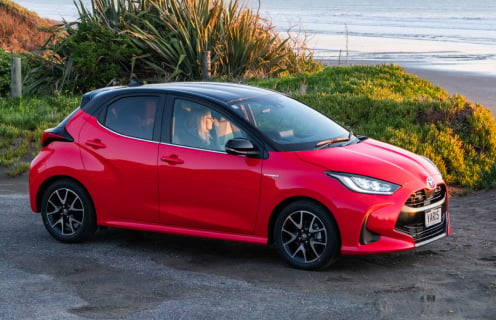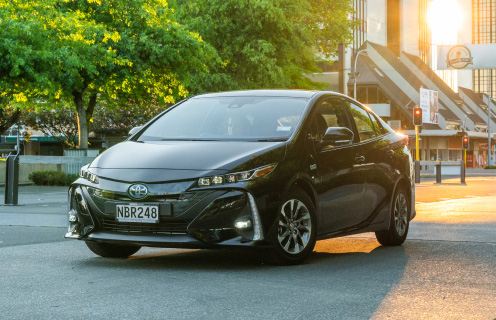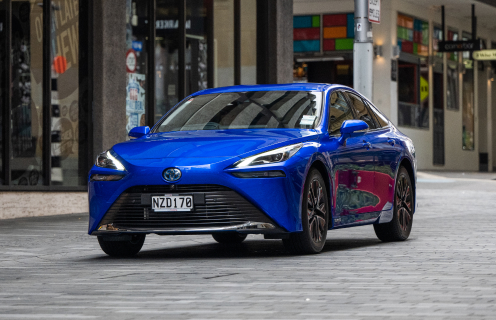Select your preferred store for a more customised experience.
*Concept model shown. Cars and accessories may differ from final New Zealand specification.
Zero Driving Emissions
Having been a major player in electrified vehicles for over two decades, we know how to get the best performance, power and reliability from an electric motor. With 7 or more new, All-Electric vehicles due to be released by 2026, our next-generation designs will change the perceptions of zero emission driving.
Toyota bZ4X
The bZ4X is the first glimpse at the Toyota All-Electric family. With the versatility of its SUV design, and the availability of All-Wheel-Drive (AWD), the bZ4X has zero driving emissions, and all the space you could need.
Great driving experience
Due to the efficiency and performance of electric vehicles, driving one is extremely rewarding and fun. They provide impressive power, getting up to their maximum acceleration rate almost instantly.
Easy to recharge
Toyota battery electric vehicles can be recharged almost anywhere - quick direct current (DC) charging stations offer the fastest recharge rates, while alternating current (AC) wall charging points, found in residential garages, and household sockets can take longer but can be found in more locations.
Forward-thinking battery production
Our batteries follow the Toyota principle, being built to last.
When it is time to retire a battery, we do so safely and responsibly. We have a nationwide programme in place to collect batteries from our stores and automotive dismantlers.
All-Electric Vehicle Powertrain
A vehicle with a battery powertrain solely uses electricity to move around, meaning it doesn’t rely on fossil fuels for power and its electric motor produces zero emissions while driving. Electric motors are generally simpler than internal combustion engines, with less moving parts, and provide near-instant acceleration rates, making battery electric vehicles fun and exciting to drive.
All Electric Vehicles can be quickly charged at DC charging stations, though they can also be charged at other AC public charging areas or at home. AC charging options will take extra time but are better for the long-term health of the battery.
FAQs about All-Electric Vehicles
All-Electric, or Battery Electric Vehicles (BEVs) are fully electric, meaning they only use a Lithium-ion battery to power the vehicle. This battery stores the electricity needed to drive the vehicle instead of relying on an internal combustion engine. This means they don't produce any harmful tailpipe emissions while driving.
We’ve been working on electric vehicle technology since 1997, giving us a wealth of experience to draw on to create a battery-powered vehicle that has unrivalled range and performance.
Electric vehicles have fewer moving parts, no wear-and-tear from containing a combustion reaction, and don't have a clutch, an alternator, spark plugs or a starter motor, to name a few complex items found in a combustion engine. This means they have less parts that require maintenance, further reducing their running costs.
Hybrid Electric, Plug-in Hybrid Electric and All-Electric are all types of electric vehicles. The key difference between them is that an All-Electric car doesn't have an internal combustion engine. All-Electric cars are only powered by their electric motor, while Hybrid and Plug-in Hybrid cars employ both an internal combustion engine and electric motor. This means still require fossil fuels, though nowhere near the extent that a conventional internal combustion engine-only vehicle does.
All-Electric cars are much more efficient than internal combustion models. In an internal combustion model, most of the energy produced by the combustion of petrol is wasted. Only around 18% is translated to the wheels. With an All-Electric car, the energy is already stored in the battery, meaning 70% or more of the energy makes it to the wheels.
Discover our Electrified Vehicles


